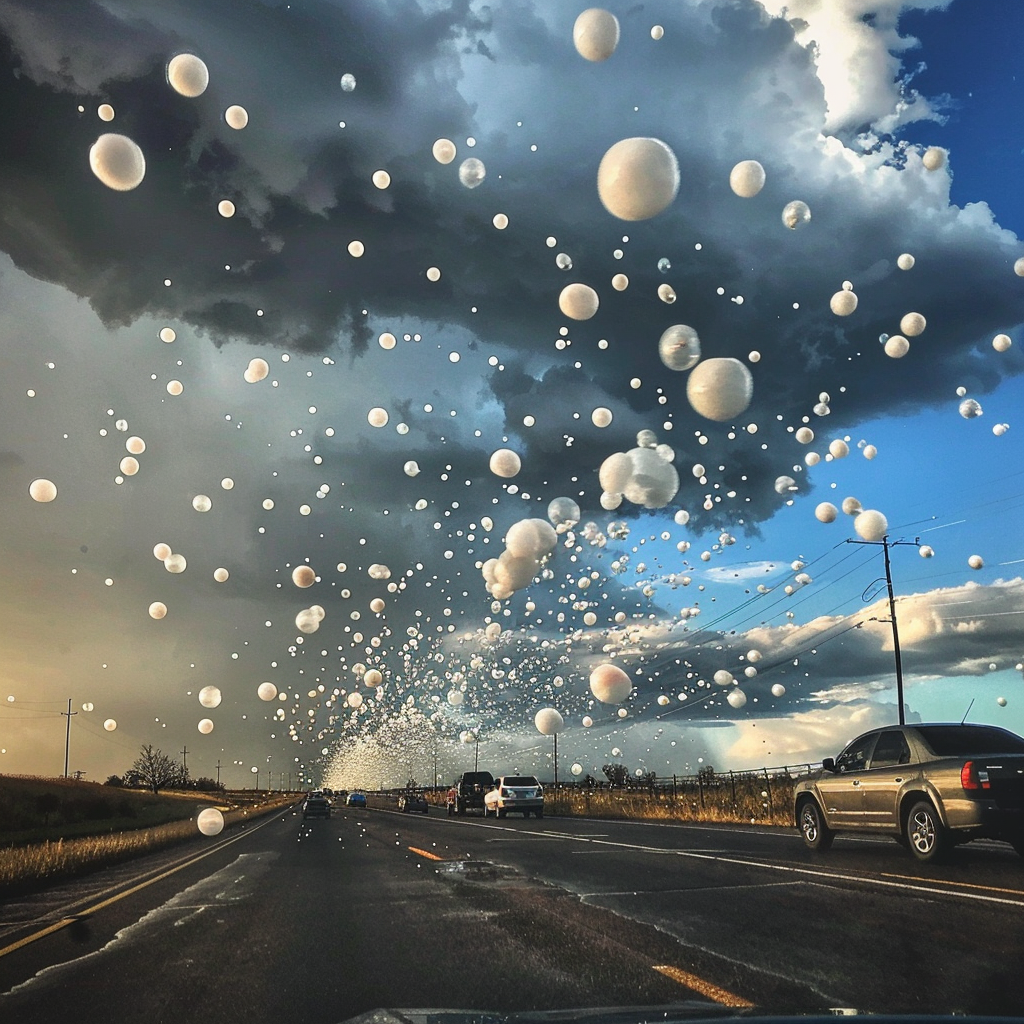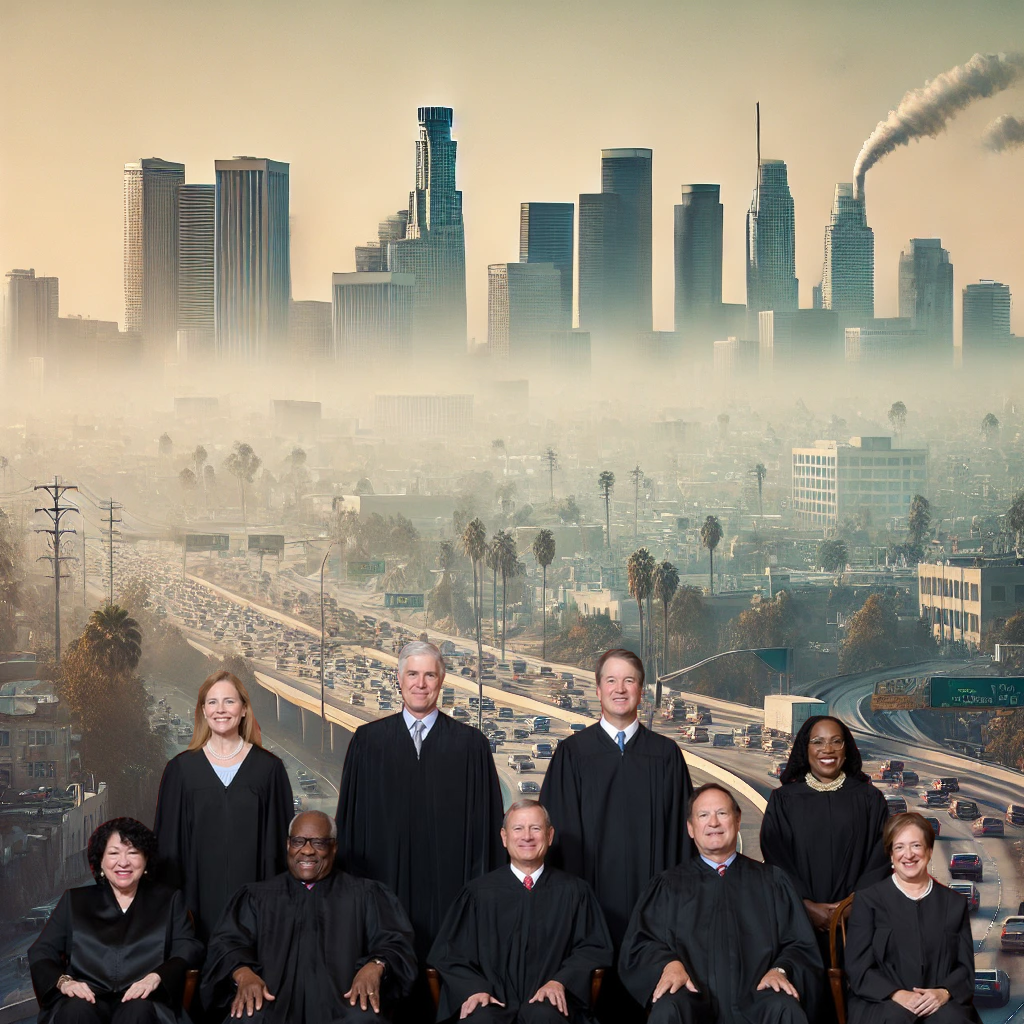Severe thunderstorms are forecasted to impact portions of eastern Nebraska and western Iowa later today, potentially affecting the evening commute. Hail with a diameter greater than 3 inches is possible according to the National Weather Service. It’s crucial to have multiple ways of receiving weather warnings to stay informed and safe.
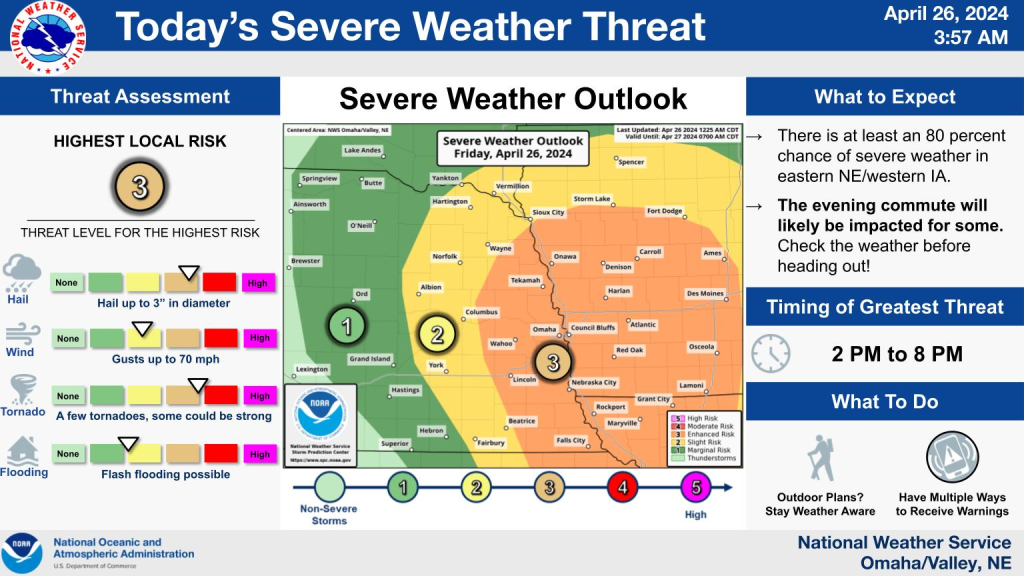
Throughout the afternoon and into the evening, the severity of thunderstorms is expected to escalate, with additional rounds of storms likely to develop. All modes of severe weather, including tornadoes, large hail, and damaging winds, are possible.
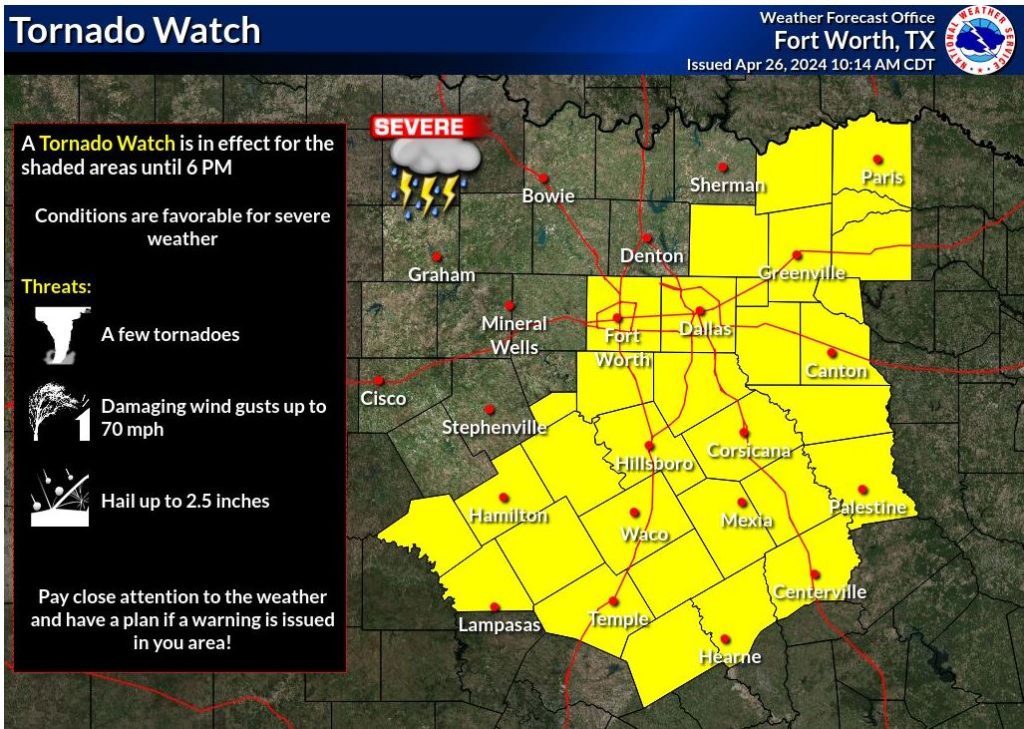
A Tornado Watch is currently in effect for much of Central Texas and eastern portions of North Texas, including the DFW Metroplex, until 6 PM. This indicates favorable conditions for severe weather. The primary threats associated with any severe storms in these areas include hail up to 2.5 inches in diameter, damaging wind gusts up to 70 mph, and the potential for a few tornadoes. It’s important to closely monitor the weather and be prepared to seek shelter if a warning is issued for your location.

Looking ahead, there is an enhanced risk of severe thunderstorms across a large portion of Oklahoma and north central Texas on Saturday, with at least a slight risk covering the entire area. Damaging wind gusts, large to very large hail, and tornadoes are all possible during this time frame, particularly from Noon through the overnight hours until sunrise Sunday morning.
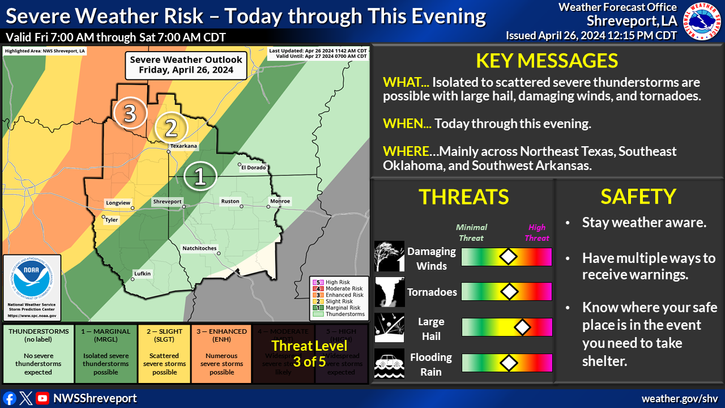
Additionally, an Enhanced Risk for severe thunderstorms is forecasted for this afternoon through this evening for Louisiana, Southeast Oklahoma, portions of Northeast Texas, and extreme Southwest Arkansas. Isolated to scattered severe storms are expected over these areas, with the possibility of very large hail (up to 2.5 inches in diameter), tornadoes, and damaging winds.

It’s essential to stay informed through reliable sources and heed any warnings issued by local authorities to ensure personal safety during severe weather events. While these events are within the realm of typical weather patterns, the intensification and increased frequency of severe weather events may be influenced by broader climate change trends, as indicated by scientific research and analyses.

